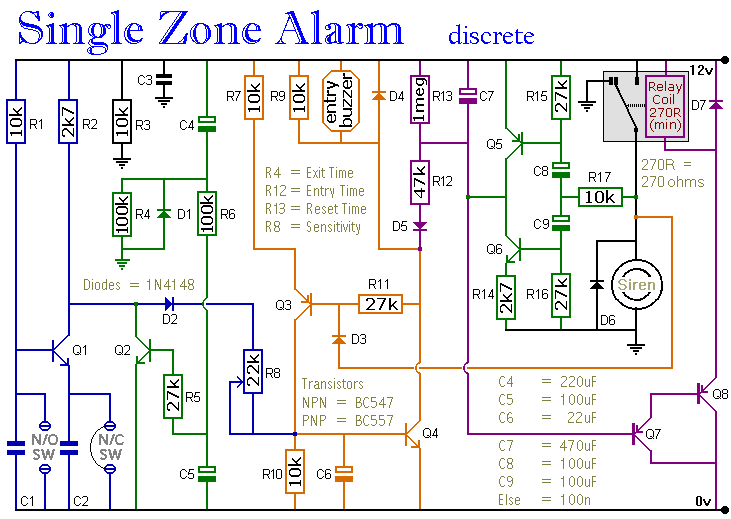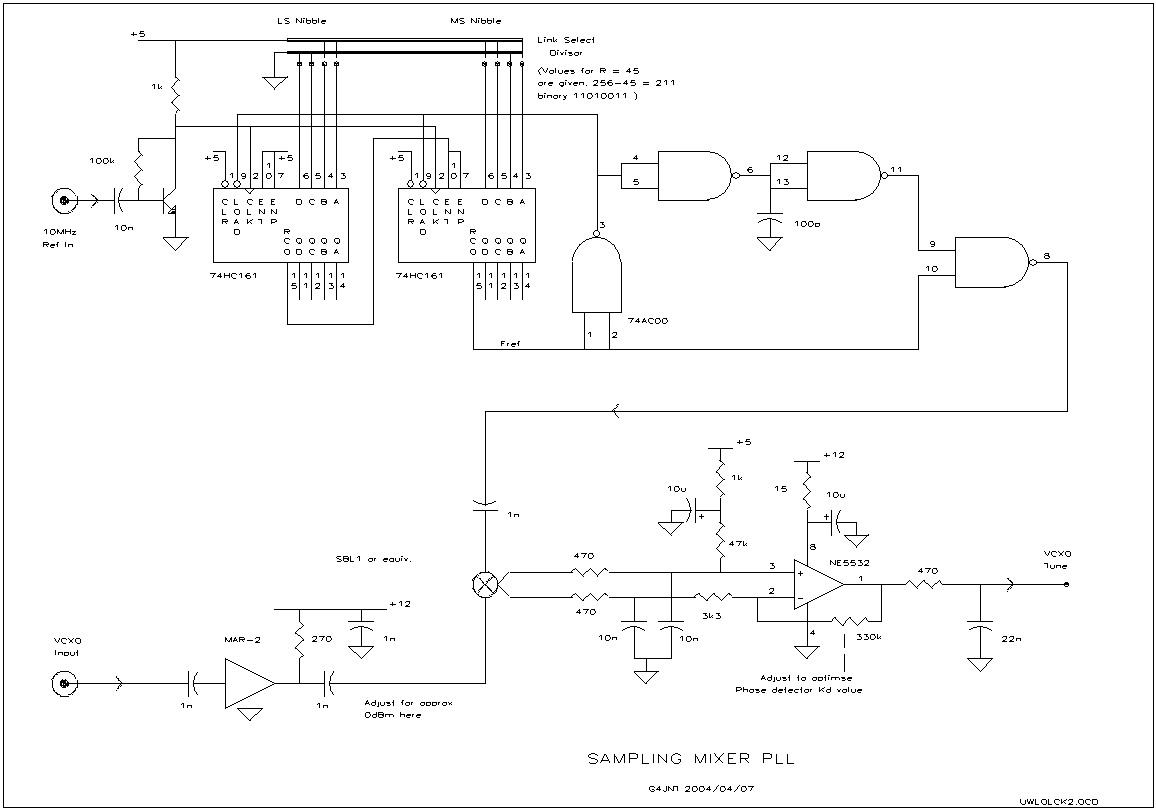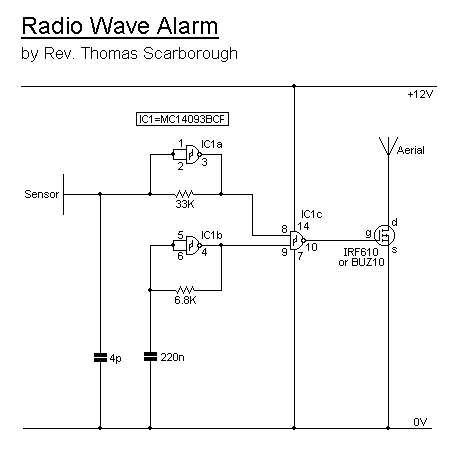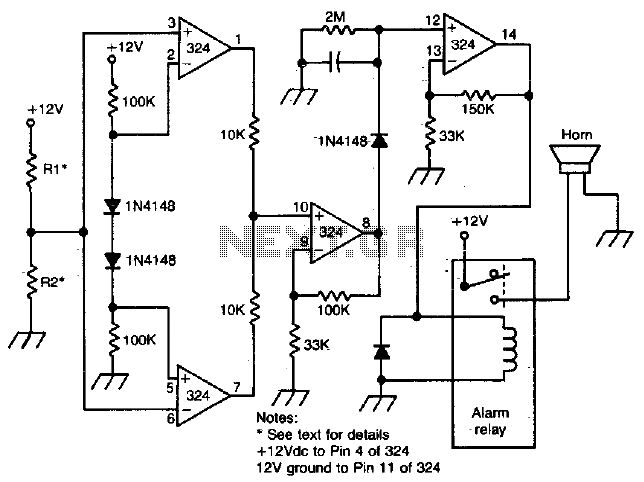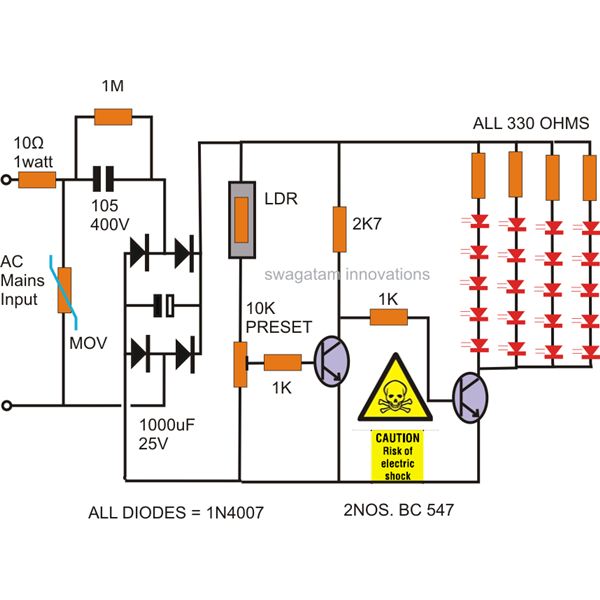
Simple Burglar Alarm
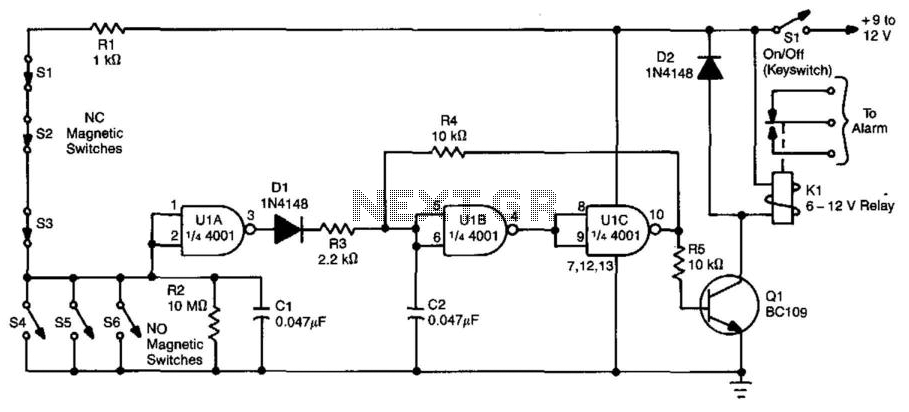
This simple alarm circuit utilizes a single integrated circuit (IC) and a driver transistor, allowing the use of either normally open (NO) or normally closed (NC) sensors. When a sensor is triggered, the input to U1A transitions to a low state, which in turn causes U1A to output a high signal, U1B to output a low signal, and U1C to output a high signal. This condition biases transistor Q1 into the ON state, thereby activating relay K1. The circuit can be powered on or off using keyswitch S1.
The alarm circuit is designed for simplicity and effectiveness, employing a single IC to manage the logic and control functions. The choice between NO and NC sensors provides flexibility in application, allowing the circuit to be tailored to specific security needs.
The integrated circuit (IC) serves as the central processing unit of the alarm system. U1A, U1B, and U1C are likely different sections of the IC, performing various logic functions. When a sensor is activated, it sends a low signal to U1A, initiating a sequence of events. U1A's output goes high, which might indicate the alarm state, while U1B's low output could serve as a reset or standby signal. U1C’s high output likely indicates that the relay should be activated.
Transistor Q1 acts as a switch that controls the relay K1. When Q1 is biased ON by the high output from U1C, it allows current to flow through the relay coil, thus closing the relay contacts. This action can trigger an external alarm or notification system. The use of a relay provides an effective means of controlling higher power devices or systems that require isolation from the low-power control circuit.
The inclusion of keyswitch S1 allows the user to manually turn the alarm system on or off. This feature is essential for maintenance or when the system needs to be temporarily disabled without disconnecting power.
Overall, this alarm circuit design is efficient and straightforward, making it suitable for various applications where monitoring and alerting are necessary. The use of commonly available components ensures ease of assembly and maintenance. Using one IC and a driver transistor, this simple alarm uses either NO or NC sensors. When a sensor operates, the inpu t to U1A goes low, causing U1A to go high, U1B low, and U1C high. This biases Q1 ON and activates relay Kl. On/off is via keyswitch SI.
The alarm circuit is designed for simplicity and effectiveness, employing a single IC to manage the logic and control functions. The choice between NO and NC sensors provides flexibility in application, allowing the circuit to be tailored to specific security needs.
The integrated circuit (IC) serves as the central processing unit of the alarm system. U1A, U1B, and U1C are likely different sections of the IC, performing various logic functions. When a sensor is activated, it sends a low signal to U1A, initiating a sequence of events. U1A's output goes high, which might indicate the alarm state, while U1B's low output could serve as a reset or standby signal. U1C’s high output likely indicates that the relay should be activated.
Transistor Q1 acts as a switch that controls the relay K1. When Q1 is biased ON by the high output from U1C, it allows current to flow through the relay coil, thus closing the relay contacts. This action can trigger an external alarm or notification system. The use of a relay provides an effective means of controlling higher power devices or systems that require isolation from the low-power control circuit.
The inclusion of keyswitch S1 allows the user to manually turn the alarm system on or off. This feature is essential for maintenance or when the system needs to be temporarily disabled without disconnecting power.
Overall, this alarm circuit design is efficient and straightforward, making it suitable for various applications where monitoring and alerting are necessary. The use of commonly available components ensures ease of assembly and maintenance. Using one IC and a driver transistor, this simple alarm uses either NO or NC sensors. When a sensor operates, the inpu t to U1A goes low, causing U1A to go high, U1B low, and U1C high. This biases Q1 ON and activates relay Kl. On/off is via keyswitch SI.
